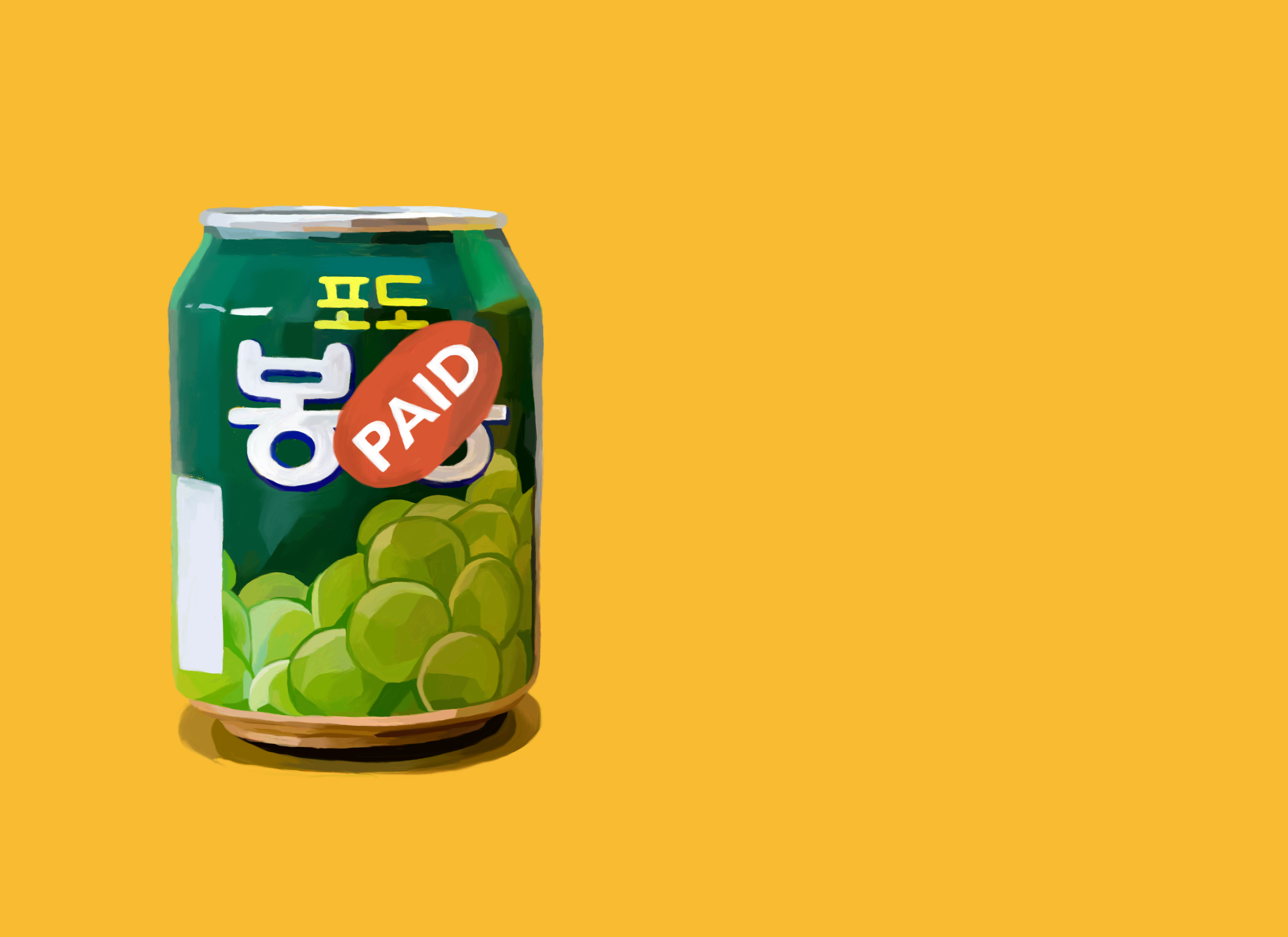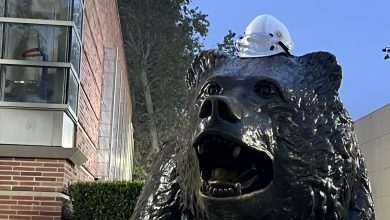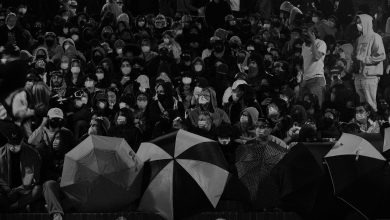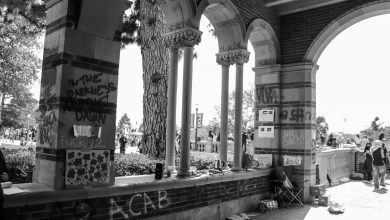Hannam Chain or Market World?

Image by Elliot Yu
There’s a dingy market just off of Sepulveda Boulevard in Torrance, California. The neighborhood surrounding it is predominantly Korean; that much is obvious if you pay attention to the signs on the nearby businesses or the bus stops with posters advertising for realtors named Kim or Park or Hyun. The surplus of Korean Americans in Torrance means that more often than not, business signs are in Hangul first then in English. This market is no different. In a blocky, stylized font the red letters read Hannam Chain. As a first generation American, I spoke English, but not Korean. Korean letters were always comforting in their visual familiarity but their unknown meaning felt mocking. Hannam Chain’s sign represented a core aspect of my culture, the language, that was just out of reach. I relied on the translation, Market World, much to the disappointment of my family. It’s an awkward translation, fumbling from Korean to English the same way my grandparents do when they speak to their American grandchildren. Though my experiences in Hannam Chain often connected me to a physical representation of my family’s culture, it is this same space that reminds me just how different the Korean American experience is from the Korean one.
Entering the grocery store is like trying to walk through a straw. The entrance is much narrower than the outside doors would suggest and there is no buffer between the building’s entrance and the actual products. Instead, the transition from sidewalk to tightly packed shelves is immediate, and distressing. Stores like these have an organized chaos: unintelligible to anyone outside the community, but those within maneuver the maze effortlessly. Brightly designed packages all seem to blend together and what little signs are in English are vague at best. If you shop on a weekday, then the only busy thing about the market would be the clash of colors on the overflowing shelves. Most Koreans own local businesses, so shopping becomes a community social event that takes place during the weekend. After church, the empty market aisles turn into pathways at a street fair. Vendors line up along the shelves. They sit in forts, the walls of their makeshift huts made out of the neatly stacked boxes of the products they are trying to sell. Ladies gossip loudly by the stands, their eyes trained on their running children as they smooth down the wrinkles in their Sunday best. Pastors come from the neighboring churches. They give sermons in the parking lot and talk to their parishioners. Neither of my parents owned a shop; they worked at a hospital and firmly believed that weekends were for relaxing. When my mother went shopping it was on Wednesdays, and we never went to Hannam Chain.
If you are a visitor in this store, like myself, then much like a foreign country, it is best experienced with a guide. My guide was my grandmother. My Halmuni was the type of person to shop on Sundays, even if she no longer owned a business. She would dress up and talk to her friends and complain about prices among the members of her church, all while my grandfather pushed the cart and greeted the men he knew from choir. My Halmuni liked to cook, so she went to the market more often than just on the weekends. She would take me, so I could learn where to find the ingredients for family recipes, because they weren’t sold at American stores. It was an effort on her part, to bridge the gap between me and a country that I will only ever remember through pictures.
As a child she would list off items for me to retrieve while she busied herself with boxes of fruit. When she told me what to get it was always daikon, bap, and ueong, never radish, rice, or root vegetables. She was impressed when I brought back the right item, from the right brand. She thought that meant I was learning. I couldn’t bear to tell her that I wasn’t reading the names on the packages or using the signs hung worryingly low between the aisles. How could I tell her that instead of reading the boxes, I stood stiff in the too cold vegetable aisle and shook from the wary eyes of market employees and not the temperature. Or that I looked at the shapes and colours on the plastic containers, hoping to recognize brand mascots that spit out phrases I didn’t understand. How I would keep looking for the package that was the most familiar, even if I was in the way of other shoppers. The clear plastic package that contained neon yellow radishes soaking in water. The one with writing in black at the top, blue in the middle, and red on the bottom. The one with a red kid wearing a hat that looked like peeled garlic. I couldn’t bear to tell her I didn’t even know how to spell my one of my favorite foods, so I just made sure to never grab the wrong one.
Beyond the language barrier, there was an external, physical part of myself that was often at odds with the environment around me. I am visibly East Asian, however, blending in physically only worked with my face. As soon as I moved, I was awkward and clumsy. I walked around the store like a tourist, glancing down aisles and picking up brightly coloured but easily forgettable bags of food. Other shoppers seemed almost supernaturally in tune with the rest of the market. They knew the spaces between shelves were too narrow for two people and that if a cart was coming down an aisle you would have to move in another direction. The dull fluorescent lights that hung overhead seemed to buzz in tune with the bustling shoppers, not synchronized but unified. Confusing twists and turns were traps meant to alienate those unfamiliar with space. Long narrow spaces and quickly moving employees who appeared from nowhere were meant to bump into strangers and test their behavior. Fitting in had less to do with what you looked like and more to do with how you existed alongside the constantly moving parts of the market. The one time I shopped there alone, all I seemed to do was back up into other customers’ carts and block the aisles. I walked out empty-handed and stopped by Target on the way home.
Hannam Chain is a seed from the east that flourished under the care of the Korean immigrants who moved to the United States. Despite my physical features, genetics, and family, which all identify me as a Korean, I find that spaces like these often emphasize how diluted my experience with my culture is as a Korean American compared to my family members who were born in the east. Without the crutch of my grandmother’s fluency I become a foreigner within a space that was designed for people like me. The familiar shapes and colors bring me comfort, but the foreign ones leave me stranded in a sea of squeaky shopping carts and teetering stacks of boxed persimmons. How Korean can I be if the very markets created for Koreans living in America, make me feel so foreign? However, as more Korean Americans become Americans who just happen to be of Korean descent, the contents of the markets change too. Coca Cola sits where there used to be sweet teas and more often than not, the cashier’s clumsy English is actually clumsy Korean. The aisles seem a little less suffocating but that might just be because the other shopper isn’t watching me struggle, but instead hoping that I don’t notice them googling the labels on bags of chips. The old country culture brought to the United States by my father is fading, and while a new community of Asian Americans may be emerging before our very eyes, it is also a time of mourning. The balancing act between cultural identities often feels like loss no matter how the scales are tipped, and it’s difficult to acknowledge that as Hannam Chain becomes more of a home to me, it isolates other parts of the community.




